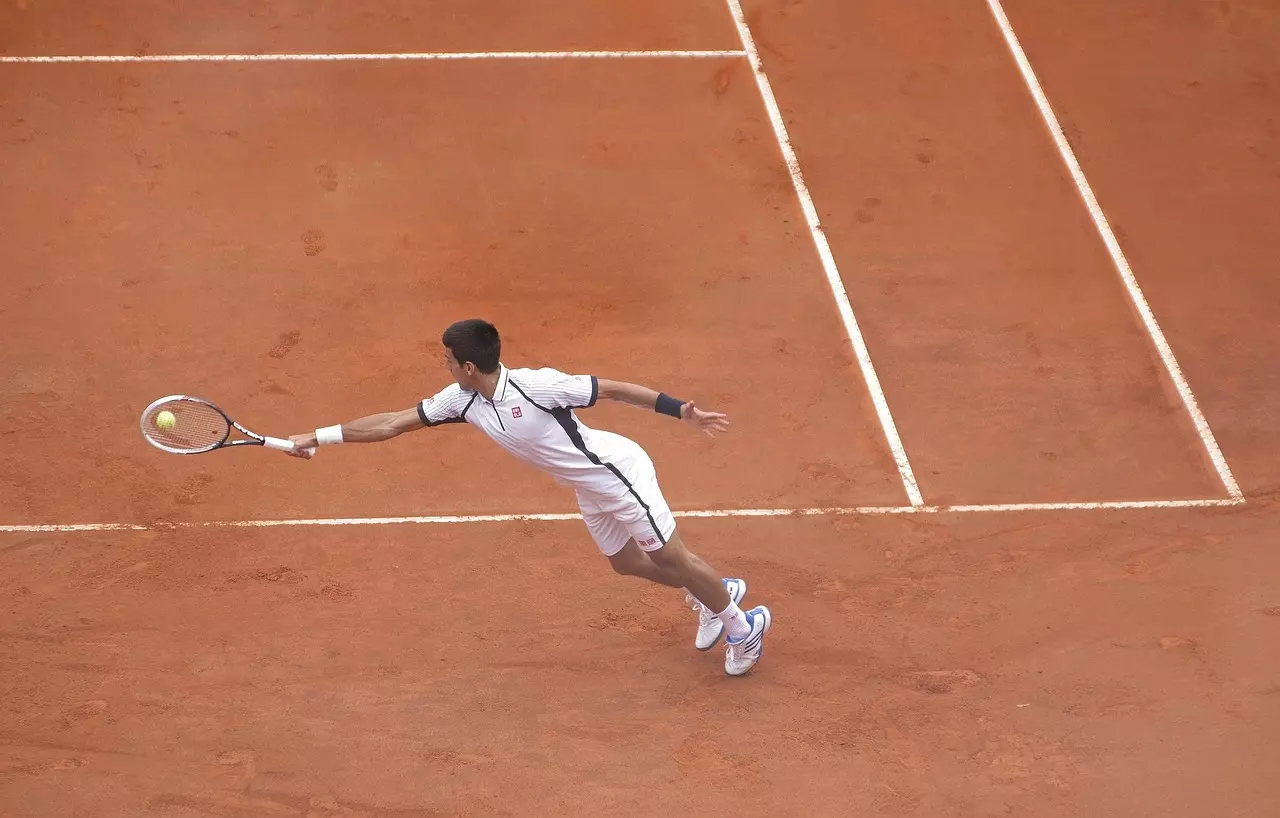Tennis betting is hugely exciting and to be successful, it is necessary to consider many different things. One factor that can make a significant difference in tennis—and consequently in betting—is the type of court surface. Here we will look at whether the type of tennis court surface impacts player performance and how this affects betting outcomes.

An Overview of Tennis Court Surfaces
Tennis is played on a variety of court surfaces, each with its unique characteristics that can significantly influence the game. The three primary types of court surfaces are clay, grass, and hard court.
- Clay Courts: Known for their red or green color, clay courts are the slowest of all surfaces. The ball bounces higher and travels more slowly, allowing players more time to reach the ball. This surface favors players with strong baseline games and high levels of endurance.
- Grass Courts: Synonymous with the prestigious Wimbledon Championship, grass courts are the fastest surface. The ball skids and stays low, making it difficult for players to react or play high bouncing shots. It favors players with strong serve-and-volley games.
- Hard Courts: These are the most common type of courts and are used in numerous tournaments, including the US Open and Australian Open. Hard courts provide a good balance between clay and grass courts. The ball bounces predictably and at a medium speed, making this surface suitable for various playing styles.
Understanding these court surfaces and their impact on gameplay is crucial in tennis betting. Different players excel on different surfaces, and this can significantly influence the outcome of a match.
Player Performance on Different Surfaces
The interplay between court surfaces and player performance is a compelling aspect of tennis. A player's style, skill set, and even physical condition can make them more adept at playing on one surface over another.
For instance, consider the legendary Rafael Nadal, who has an unmatched record on clay courts. Nadal's high-spin shots and extraordinary endurance complement the slow and high-bouncing nature of clay. This harmony between the player's style and the court surface has earned him an unprecedented number of titles at the French Open, a tournament played on clay, and the nickname "King of Clay."
On the other end of the spectrum are players like Pete Sampras and Roger Federer, who have had remarkable success on grass courts. The fast and low-bouncing nature of grass courts aligns well with their powerful serves, quick volleys, and aggressive net play, tactics that are often rewarded on this type of surface.
There are also players who exhibit a high level of adaptability, performing well across all surfaces. Novak Djokovic, for example, has achieved success on both hard and grass courts due to his exceptional return game, baseline play, and overall consistency.
In tennis betting, understanding these player-surface dynamics can be a game-changer. A player's historical performance on a specific surface can often serve as a valuable indicator of their potential performance in future matches.
How Surface Type Influences Betting Odds
When setting odds, bookmakers consider a variety of factors, one of which is the type of court surface. If a player has a track record of performing well on a particular surface, the odds will generally favor that player when they play on that surface.
But that's where the opportunity for astute bettors comes in. Understanding the impact of court surfaces can help you spot value bets. For instance, a player might be considered an underdog according to the odds, but if they are playing on a surface that suits their game, they might have a better chance of winning than the odds suggest.
This understanding becomes even more crucial in the realm of in-play betting. As a match progresses, bettors who understand how a player's game suits the ongoing match's surface can make informed betting decisions. For example, in a long clay court match, players with good endurance and consistent baseline play tend to have an edge. Recognizing this could influence bets on the match winner or the outcome of specific sets.
In essence, a deep understanding of court surfaces and their impact on player performance can provide a significant edge in tennis betting.
Case Study – Nadal vs Federer
To illustrate the impact of court surfaces on betting outcomes, let's consider a classic example from the 2008 Wimbledon final, often hailed as one of the greatest matches in tennis history.
This match saw Rafael Nadal, the 'King of Clay,' face Roger Federer, a player with a spectacular record on grass courts. Despite Federer's grass-court dominance and the fact that he was chasing his sixth consecutive Wimbledon title, Nadal emerged victorious in a five-set thriller.
Many bettors who had studied both players' performances on different surfaces saw potential value in betting on Nadal. Even though Federer was a strong favorite due to his grass-court prowess, Nadal had been improving on grass and had narrowly lost the previous year's final to Federer. In this case, understanding the impact of court surfaces and the players' adaptability to different surfaces could have led to profitable bets on Nadal, defying the general expectation.
This case study underscores the importance of considering court surface type when betting on tennis. It highlights that while court surfaces significantly influence player performance, adaptability and form can sometimes defy the odds.
Mastering Bets with Court Knowledge
It should now be clear, a deeper understanding of the characteristics of clay, grass, and hard courts, and their impact on different playing styles, can provide a valuable edge when betting on tennis. At Galera.Bet, we provide a diverse range of betting options that allow you to apply this understanding and formulate more informed betting strategies. So, why wait? Dive into the thrilling world of tennis betting at Galera.Bet today.
 Have Live Dealer Games Reached Their Full Potential?
Have Live Dealer Games Reached Their Full Potential? Slot Machine Design and Player Psychology Explored
Slot Machine Design and Player Psychology Explored 2024 WNBA Playoffs: Preview and Betting Markets
2024 WNBA Playoffs: Preview and Betting Markets 10 Reasons Why VR Casinos are the Future of Online Casino Gaming
10 Reasons Why VR Casinos are the Future of Online Casino Gaming 10 Unconventional Tips for Responsible Gambling in 2024
10 Unconventional Tips for Responsible Gambling in 2024 Hayley M.
Hayley M. Melinda E.
Melinda E. Sergiu M.
Sergiu M.